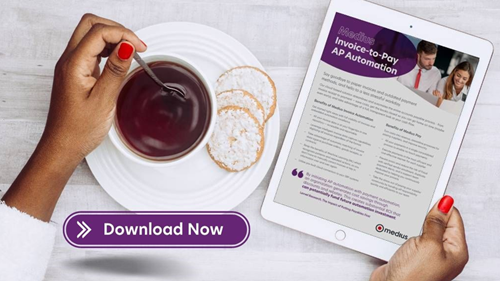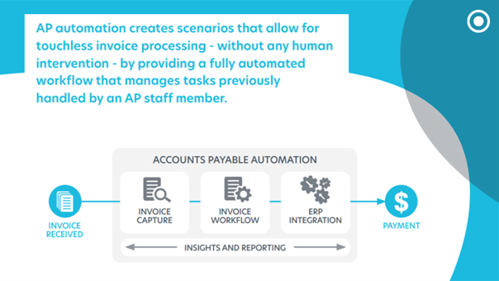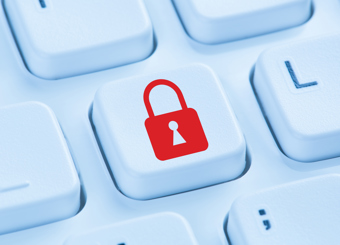How to Implement Paperless Invoice Processing
It seems that nearly everyone is going paperless these days. Banks, utility companies, and even government services now offer the option of paperless statements and invoices, and so should your business. After all, paper creates unnecessary clutter and waste, not to mention it is quickly becoming an old-fashioned way of doing business. Going paperless helps streamline business functions by increasing efficiency for suppliers and clients alike. If you are considering making the switch, here are some helpful tips on implementing paperless invoice processing.
What is Invoice Processing?
Invoice processing is a sequence of steps for tracking and paying incoming invoices from suppliers. The processing sequence starts when incoming invoices are received and concludes after they have been paid. Invoices can be printed on paper or sent via email as a PDF or e-invoice. But no matter what form it comes in, the information on the invoice must be entered into an accounting system, either manually or automatically. Once the information is input into the system and the invoice approved, payment can then be issued, thus concluding the invoice processing cycle.
What Are the Main Steps Involved in Invoice Processing?
Efficiency is not only a key component in running a successful business but in processing invoices as well. Therefore, the main steps in the processing cycle must be well-defined and easy to follow. The primary steps in invoice processing include:
Invoice Receipt
Typically, the accounting department within a business handles each incoming invoice. The department will review the information on the invoice and confirm the procurement of the product or service. After confirmation, they will check the purchase order (PO) to ensure that the values match those on the invoice, and then it is forwarded for approval. However, in some cases, the PO cannot be found. In this event, the AP department must first verify that the supplier exists then enter their details manually, including coding and approvers.
Approval of Invoice
The monetary values on the invoice are then reviewed separately by the accounting department to confirm they are correct. If the invoice is already matched to a PO and the goods/services have been marked as received, the user will not need to approve again. If there is no PO, the figures will need to be verified by the correct approver to complete the payment.
Payment of Invoice
Based on the terms established between the business and the supplier, the accounts payable (AP) clerk will issue a payment. Timely payments are essential in maintaining a good relationship with suppliers, and payments made after the due date can incur late payment fees or lead to account closure. Paying invoices on time necessitates that the accounting department operates seamlessly.
Additionally, both buyers and suppliers can incentivize a smooth process by offering early payment discounts. For instance, suppliers can give their buyers the benefit of paying less than the full invoice amount when it’s paid before the final maturity date. Buyers can also offer dynamic discounting, which gives the supplier the option to advance a payment on their invoices for flexibility and peace of mind.

What Are the Most Common Mistakes in Invoice Processing?
Whether they result from human error, negligence, or uncontrollable external factors, mistakes happen. But when they occur during invoice processing, the consequences can be catastrophic. Fortunately, most invoicing mistakes are easy to correct; however, even a minor error will hinder overall efficiency. Here are some common invoice processing and accounts payable mistakes:
Data Entry Errors
Invoices contain a lot of data, and it is common for errors to occur as this data is input into an accounting program. All it takes is one missed keystroke to throw the ledger balance off and waste precious time as the error is determined and corrected.
Payment Before Product
With all the hustle-and-bustle in a business setting, it is not surprising that an invoice could accidentally get paid before the supplies are delivered. Though it might not be surprising, that still does not mean it should happen. And if the supplies never arrive, it could create difficulties in recouping the funds.
Double Payments
One of the issues that occur when businesses choose to process an invoice rather than use an automated system manually is double payments. All it takes is forgetting to stamp an invoice as "paid," and chances are it will get paid twice. The recipient of the double payment may return the overpaid funds on their own, but many times that isn’t the case. It often involves following up to get the money back, resulting in hours of lost time for accounting teams. An error of this type is also embarrassing and can give the perception of a disorganized business.
For more information on common accounts payable mistakes and their business impact, check out our blog Accounting errors and AP automation: there are no small business mistakes
What is Paperless Invoice Processing?
Paperless invoice processing involves taking all the usual accounts payable tasks and switching them from a paper-based form to an electronic or digital format. This means using digital storage and payments and employing invoicing software such as Medius’s AP automation solution to handle these business functions.

What Are the Alternatives to Paperless Processing?
As we discussed, the two main alternatives to invoice processing automation are paper invoices and emailed PDF invoices. Importing paper invoices manually can be a slow and inefficient undertaking, but many strides have been made in importing digital PDF invoices The Medius captures solution can automatically read emailed PDF invoices and import them into the system. In fact, our touchless capture rate is at 62.2 and 95.8 for Medius Average and Best in Class, regardless of invoice receipt method.
How Does Paperless AP Reduce Risks?
Risk reduction is the foremost benefit of utilizing a paperless AP system. Since paperless AP does not require manual data entry or manual transferring of data, it eliminates the possibility of human error. Therefore, you will no longer have to worry about inputting incorrect information, double payments, or accidentally paying before the supplies are received.
Reasons to Implement Paperless Invoice Processing
Aside from eliminating human error, there are several other reasons for implementing a paperless AP system, such as its ability to streamline AP duties and create a more efficient accounting department, thus increasing overall business functions. On top of this, going paperless will save your business money. Paper, printer cartridges and time-intensive manual labor are not cheap and all of these costs can be reduced or eliminated by transitioning to a paperless invoicing system.
How Do You Implement a Paperless Invoice Processing System?
Switching over to a paperless AP system is easier than you might think. With some planning and strategizing, you will soon be ready to take action and make the transition. Here are the steps typically involved in implementing a paperless accounts system:
Planning
The planning phase is critical for a successful transition, so you will need to meet with the entire accounting team to determine where the AP workflow currently stands, what improvements are necessary, and who will be responsible for fulfilling each role before and after going paperless.
Digitizing
Whether digitizing is completed within your company or hired out, converting all your paper documents is a must. This monotonous task can be time-consuming and arduous, but in the end, it will be well worth the effort.
Automating
When it comes time to choose an automated AP solution, make sure it meets all of your business needs. There are an array of exceptionally efficient software platforms on the market, such as Medius, which can be scaled to fulfill the requirements of businesses small and large.
Configuring
Once you have integrated the automation software, you can customize its features to help you achieve your business goals. Make sure to take advantage of options like automated invoice coding and approval routing, as these are vital in increasing efficiency.
Learning
It takes time to learn how to use new software properly, so do not be deterred. Instead, get together with the accounting team and review each feature to ensure everyone is comfortable using the system. Doing this will create cohesion and reduce issues within the AP department.
How Can Medius Help with Paperless Invoice Processing?
We believe Medius is one of the most highly rated and scalable automated invoice processing software platforms available on the market. It has an array of incredible features that help guarantee punctual invoice payments, prevent fraudulent activities, and optimize working capital, thus saving you loads of time and money. Medius utilizes state-of-the-art artificial intelligence (AI), machine learning (ML), and optical capture to digitize and process online invoices. All these features work seamlessly together to help improve AP operations and increase AP efficiency. If transitioning to paperless invoice processing is on your itinerary, Medius is here to help. See the resources below to learn more about our solution, previous success stories or see our product in action.
VIEW REASONABLE NEXT STEP RESOURCES FROM MEDIUS:

The Future of AP is Paperless
There is no need for a crystal ball to see that the future of AP rests in paperless invoice processing. By automating AP duties, you will eliminate the drudgery of manual invoice processing and drastically reduce errors. With more and more businesses utilizing accounts payable automation software, it leaves no doubt about the benefits of paperless invoice processing. Start improving your business operations today by transitioning to a paperless AP system.






